There are a great many weird places as one tours Bulgaria. One of these sites is unique – the Dome Tomb from the era of the Classical Antiquity near the Black Sea town of Pomorie. It sits among well-groomed vineyards and orchard gardens, only 300 m from the road from Burgas to Pomorie.
At the very entrance the amazed visitor realizes he or she has come to a temple where the spirit of olden times is in the air. A 22-m corridor takes you to a round chamber with a diameter of 11.60 m and with stunning architecture. The walls resemble a semi-cylindrical vault. There is a hollow column in the middle which expands as it ascends and merges with the outer wall. Architects from across the world have studied this site in a bid to solve the mystery of the accurately built tomb dated to the period of 2-4 c. AD.
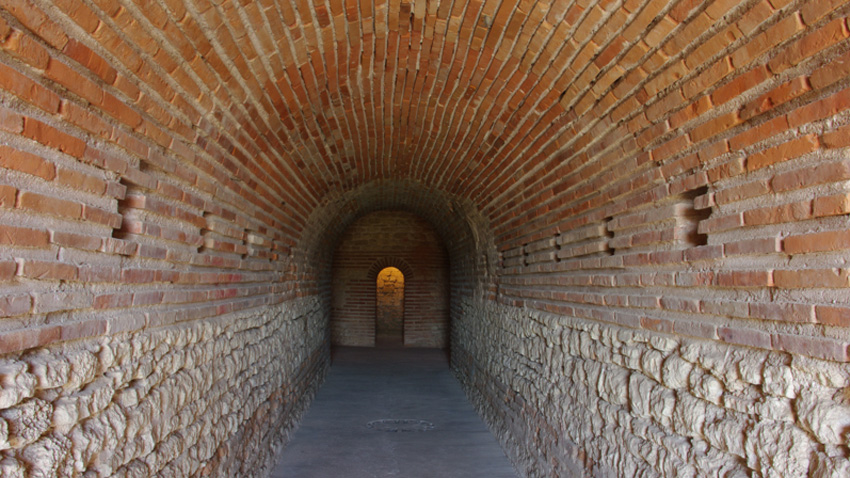
The construction is mainly of limestone and bricks welded with mortar. The tomb’s masters, however, remain unsurpassed to this day. On the inside of the hollow column there used to be a spiral stone staircase that led to the surface of the mound. There are five niches on the ring-wall of the tomb, in which urns or statues of the deceased were placed. Nothing from the decoration and the content has been preserved.
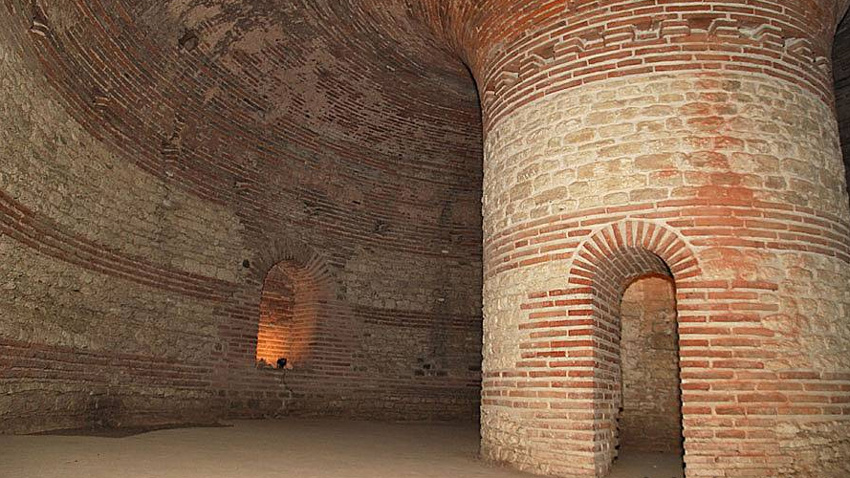
Scholars are puzzled and cannot even find a specific name for the ancient structure. Among locals it is known as “the hollow mound”, because the tomb was carefully covered with soil like the mounds left behind by the Thracians. „This site exposes a very good mix of Roman architecture and Thracian traditions. So far it has no analogue in the lands that used to be part of the Roman Empire”, says local guide Alexander Stoev.
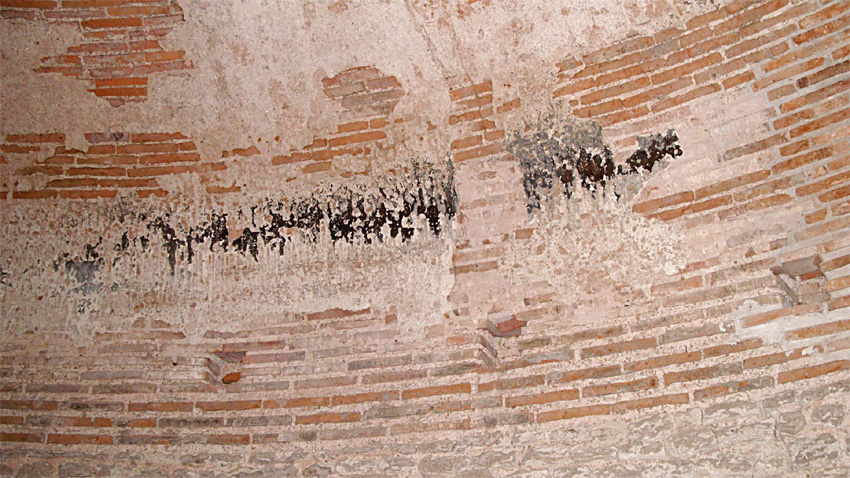 „In 1958-59 restoration works of the tomb began that also included partial excavations but no remains of funerals or sarcophaguses were found. The style of this mausoleum is strictly Roman. Even the bricks are quite typical of Roman masonry. The structure reminds of the architecture of Roman mausoleums. Imperial ones were like this, but were bigger and have several floors. They had a similar oval hall with a column in the middle and with niches in the walls where urns with the ashes of the dead were stored. The only thing in common that the structure has with a Thracian tomb is that after it was built it was covered with soil and shaped like a mound. This method is exclusively Thracian and seen in their funeral facilities. Here the column in the middle is 8.80 m high and it could have been higher that 10 m but we cannot say, because the mound is heavily eroded. Interestingly, there was a spiral staircase inside the column, but it probably collapsed because the stone was very friable. Throughout the Roman Empire, there were 16 buildings with similar staircases, but they are not common. The building was incredibly rich, but it was looted by treasure hunters in ancient times. Anhialo (the ancient Pomorie) was a prosperous town. A great deal of the trade of Constantinople passed through its port. The distance between Anhialo and Constantinople could be crossed by sea for just one day. Its location is strategic: the road to the regions of Moesia and Thrace passes through Pomorie.”
„In 1958-59 restoration works of the tomb began that also included partial excavations but no remains of funerals or sarcophaguses were found. The style of this mausoleum is strictly Roman. Even the bricks are quite typical of Roman masonry. The structure reminds of the architecture of Roman mausoleums. Imperial ones were like this, but were bigger and have several floors. They had a similar oval hall with a column in the middle and with niches in the walls where urns with the ashes of the dead were stored. The only thing in common that the structure has with a Thracian tomb is that after it was built it was covered with soil and shaped like a mound. This method is exclusively Thracian and seen in their funeral facilities. Here the column in the middle is 8.80 m high and it could have been higher that 10 m but we cannot say, because the mound is heavily eroded. Interestingly, there was a spiral staircase inside the column, but it probably collapsed because the stone was very friable. Throughout the Roman Empire, there were 16 buildings with similar staircases, but they are not common. The building was incredibly rich, but it was looted by treasure hunters in ancient times. Anhialo (the ancient Pomorie) was a prosperous town. A great deal of the trade of Constantinople passed through its port. The distance between Anhialo and Constantinople could be crossed by sea for just one day. Its location is strategic: the road to the regions of Moesia and Thrace passes through Pomorie.”
The mound was familiar to the local people even in the years before the Liberation of Bulgaria (1878). According to the legend, there was a big farm here. One day two shepherds, while grazing their sheep, made a hole above the mound and entered it. Since then the site has been known as "the hollow mound". "Research began at the end of the 19th c.", says Anton Karabashev, Director of the Museum of History in Pomorie:
„The brothers Karel and Hermann Skorpil, Czech archeologists, visited Anhialo to record local sites – various monuments, marble columns, inscriptions in Ancient Greek and Latin. They made the first sketches and drawings and with their publications introduced this interesting monument to the world archeological community. It is no coincidence that they have been dubbed ‘the founding fathers of Bulgarian archeology’.”
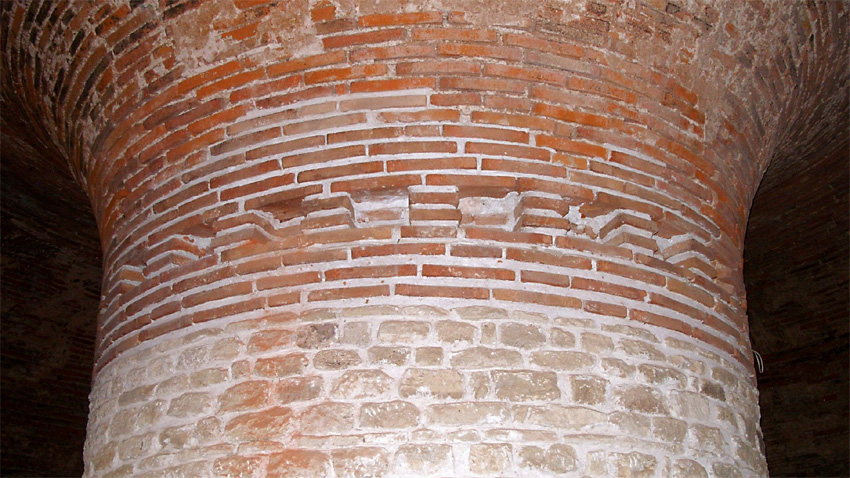
After the Liberation, there were no such specialists in Bulgaria. The Bulgarian government had to hire foreign scholars, especially from the Czech Republic. Today's historians have checked everything documented and written by them. Everything is accurate to a centimeter and there is no difference from recent measurements on the mound. Even then, the Skorpil brothers assumed that it was a tomb.
In the recent years, however, researchers of the Roman culture in our lands have supported the view that this is not actually a tomb. They suggest it is a mausoleum, the so-called heroon - a sanctuary of a hero, the subject of a cult in the ancient religions. In ancient times, people visited the monument massively and held religious rituals there. This is the only museum in Bulgaria with such architecture, construction and purpose.
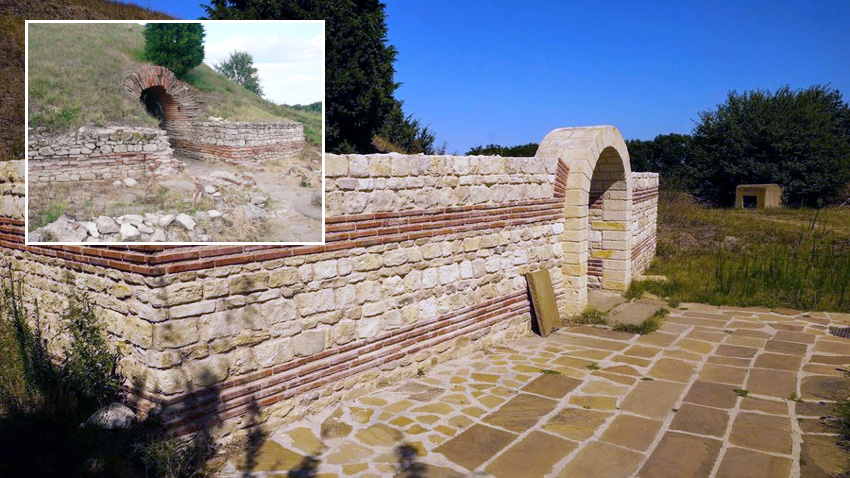
English Daniela Konstantinova
Photos: archiveBulgarian violinist Albena Danailova is the first assistant to concertmaster Rainer Honeck in the New Year's concert of the Vienna Philharmonic on January 1, 2024. Conductor will be Christian Thielemann . Albena..
The night before Christ's Nativity in Bulgarian folklore culture is known by several names. Of course, most often we call it Christmas Eve, and the main meaning of the traditions and rituals of the holiday is well-known - it is a holiday of humility,..
A series of holidays starts in December, taking us closer to the shared moments of comfort and love on Christmas Eve. "Varvara boils it, Sava roasts it, Nikola welcomes guests." this is how Bulgarian people describe the..

+359 2 9336 661
